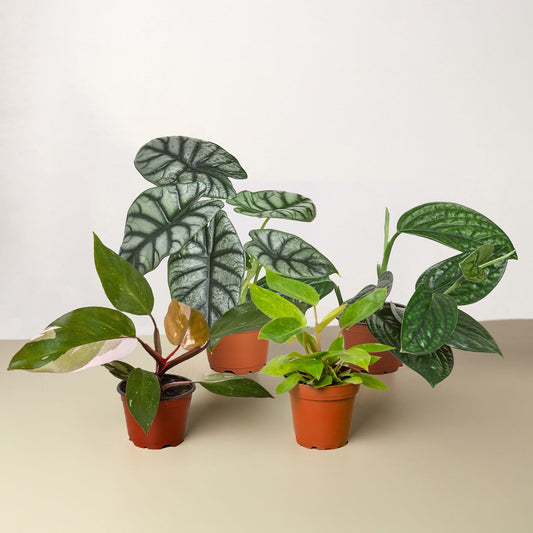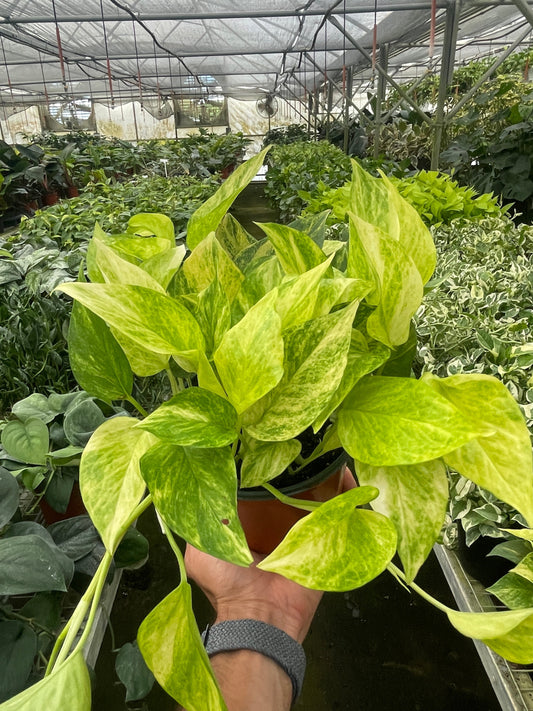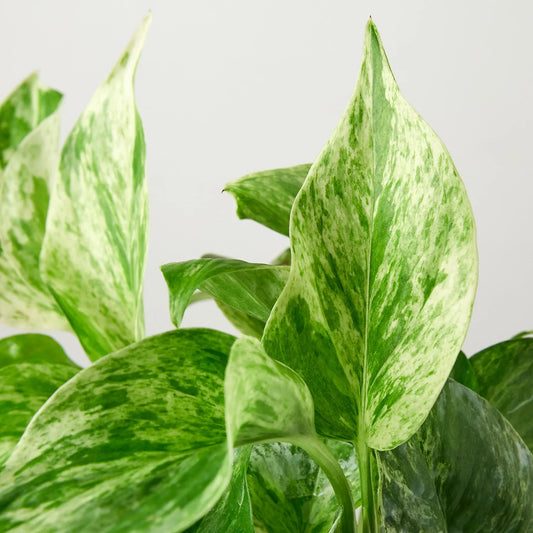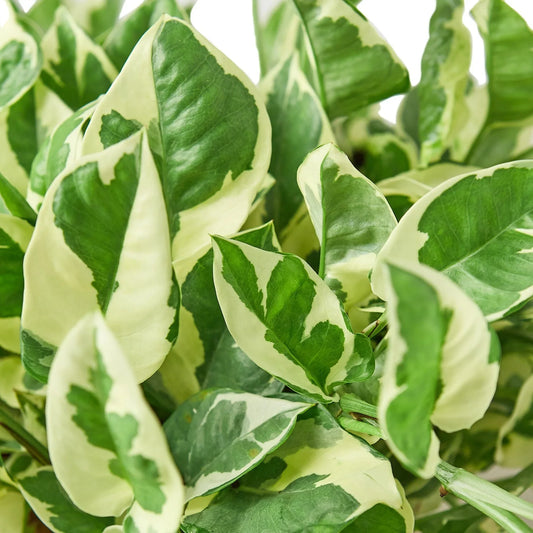What's The Best Pot For a Pothos?
Cafe Planta Team
If you’ve ever brought a pothos plant into your home, you know they’re the kind of plant that seems to thrive no matter what. But to keep that pothos looking its best, the pot you choose can play a surprisingly significant role. With so many options out there, how do you decide which is the best fit for your leafy friend?
In this article, we’ll chat about the different pot materials, sizes, and designs that work well with pothos plants. We’ll also talk about drainage, aesthetics, and practical tips for keeping your pothos happy and healthy. By the end, you’ll be able to make an informed choice, ensuring your pothos is both stylish and thriving.
Understanding Pothos Needs
Before we start picking out pots, it’s important to understand what makes a pothos plant tick. Pothos, also known as Devil’s Ivy, is a hardy plant known for its trailing vines and heart-shaped leaves. They're native to tropical regions, which means they love humidity and warmth. But don’t let that scare you! They’re super adaptable and can handle a variety of indoor conditions.
Pothos plants prefer well-draining soil and don’t like to sit in water. Overwatering is one of the few ways you can actually upset these resilient plants. So, the pot you choose should help manage moisture levels effectively. Keep these needs in mind as we explore different pot options.
Material Matters: Pros and Cons
When it comes to pot materials, you have several choices, each with its own set of advantages and drawbacks. Let’s break it down:
Ceramic Pots
- Pros: Ceramic pots are aesthetically pleasing and come in various colors and styles, making them easy to match with your decor. They’re also quite durable.
- Cons: They can be heavy, especially when filled with soil and a mature plant. They also don’t provide much aeration, which can lead to moisture retention.
Plastic Pots
- Pros: Lightweight and inexpensive, plastic pots are easy to move around. They often come with pre-drilled drainage holes.
- Cons: They’re not as durable as other materials and can degrade over time if exposed to direct sunlight.
Terracotta Pots
- Pros: Terracotta is porous, which means it allows for excellent airflow and prevents waterlogging.
- Cons: They can dry out quickly, which might require more frequent watering. They are also more fragile than other options.
With these options, consider what’s most important to you. If you’re looking for a pot that complements your living room, ceramic might be a good choice. If you’re more concerned about weight, plastic could be your best bet. And if you prioritize airflow, terracotta is the way to go.
Size It Right
Picking the right pot size is crucial for your pothos's health. Too small, and the plant will become root-bound; too large, and you risk overwatering. So, how do you strike the perfect balance?
- Start with a pot that is 1 to 2 inches larger in diameter than the root ball of your plant.
- If you notice roots coming out of the drainage holes or circling the pot's surface, it’s time to repot into a slightly larger container.
- Avoid the temptation to jump up several sizes at once, as this can lead to water sitting in excess soil, making it harder for the plant to absorb it all.
Remember, pothos plants grow quickly, so you might find yourself repotting every 1-2 years. It’s part of the process and a great opportunity to refresh the soil and check on your plant’s overall health.
Drainage: A Must-Have
If there’s one thing your pothos will thank you for, it’s ensuring proper drainage. Without it, you run the risk of root rot, which is not a fun situation for any plant parent. Here’s how you can make sure your pot provides adequate drainage:
- Choose a pot with drainage holes at the bottom. This allows excess water to escape and prevents the roots from sitting in water.
- If you fall in love with a pot that doesn’t have drainage holes, consider using it as a decorative outer pot. Plant your pothos in a plastic pot with drainage, then place it inside the prettier pot.
- Use a layer of small rocks or pebbles at the bottom of your pot to improve drainage even further.
Think of drainage as your pothos's safety net. It’s an easy step that can prevent serious problems down the line.
Aesthetic Considerations
While function is important, let’s be honest, we all want our plants to look good too. Your pothos pot can be a statement piece in your home, complementing your interior design.
Consider the following when choosing a pot for aesthetic purposes:
- Color: Neutral colors can help the green leaves of your pothos stand out, while bold colors can add a splash of personality.
- Shape: Round pots are classic, but don’t shy away from geometric shapes if they suit your style.
- Texture: A smooth pot can look sleek and modern, while a textured pot can add depth and interest to your space.
Ultimately, the choice is yours. Have fun with it! Your pothos will look beautiful no matter what, but a thoughtfully chosen pot can tie together the whole look of your room.
Practical Tips for Potting
Once you’ve chosen your pot, it’s time to get your hands a little dirty. Here are some practical tips to keep in mind when potting or repotting your pothos:
- Use a good-quality potting mix designed for houseplants. You can add perlite or sand to improve drainage if needed.
- Gently remove the plant from its current pot. If it’s stuck, try running a butter knife around the edge to loosen it.
- Place your plant in the new pot and fill around it with soil. Make sure the top of the root ball is level with the top of the pot.
- Water your pothos thoroughly right after potting to help it settle into its new home.
These steps can make the process smoother and ensure your pothos is comfortable in its new pot. Remember, patience is key—plants can take a little time to adjust to their new environment.
Dealing with Overwatering and Underwatering
Watering can be tricky, but with a little practice, you’ll get the hang of it. Here’s how to tackle the two most common watering issues:
Overwatering
- Signs: Yellowing leaves, wilting despite moist soil, and a musty smell.
- Solutions: Check that your pot has proper drainage. Allow the soil to dry out before watering again. Consider repotting if the roots are mushy.
Underwatering
- Signs: Brown leaf tips, dry soil, and leaves that are crispy to the touch.
- Solutions: Increase your watering frequency. Ensure the water reaches the roots by watering until it flows out of the drainage holes.
Watering might seem like a guessing game at first, but with attention and care, you’ll find the rhythm that works best for you and your pothos.
Decorative Options: Elevating Your Pothos
Once your pothos is happily potted, why not take it up a notch? Here are some creative ideas to showcase your plant:
- Hanging Baskets: Perfect for trailing vines, hanging baskets can free up surface space and add greenery at eye level.
- Plant Stands: Elevating your pothos on a stand can create a layered look, especially if you have multiple plants.
- Macramé Hangers: These add a boho touch and can be customized to fit your pot’s style.
These options are not only practical but can also transform your space into a mini-jungle. Get creative and let your pothos shine!
Conclusion
Choosing the right pot for your pothos involves a balance of practicality and style. Consider the plant’s needs for drainage and space, but don’t forget to express your personal taste through color, material, and design. By following these tips, your pothos will thrive, adding a touch of nature to your home.
At Cafe Planta, we’re passionate about helping you care for your plants. Whether you’re a seasoned plant parent or just starting out, we offer a range of houseplants, accessories, and plant-themed apparel. If you have any questions, feel free to email us or send us a DM on Instagram. We’d love to hear from you and help you create a beautiful, thriving plant collection in your home.



















